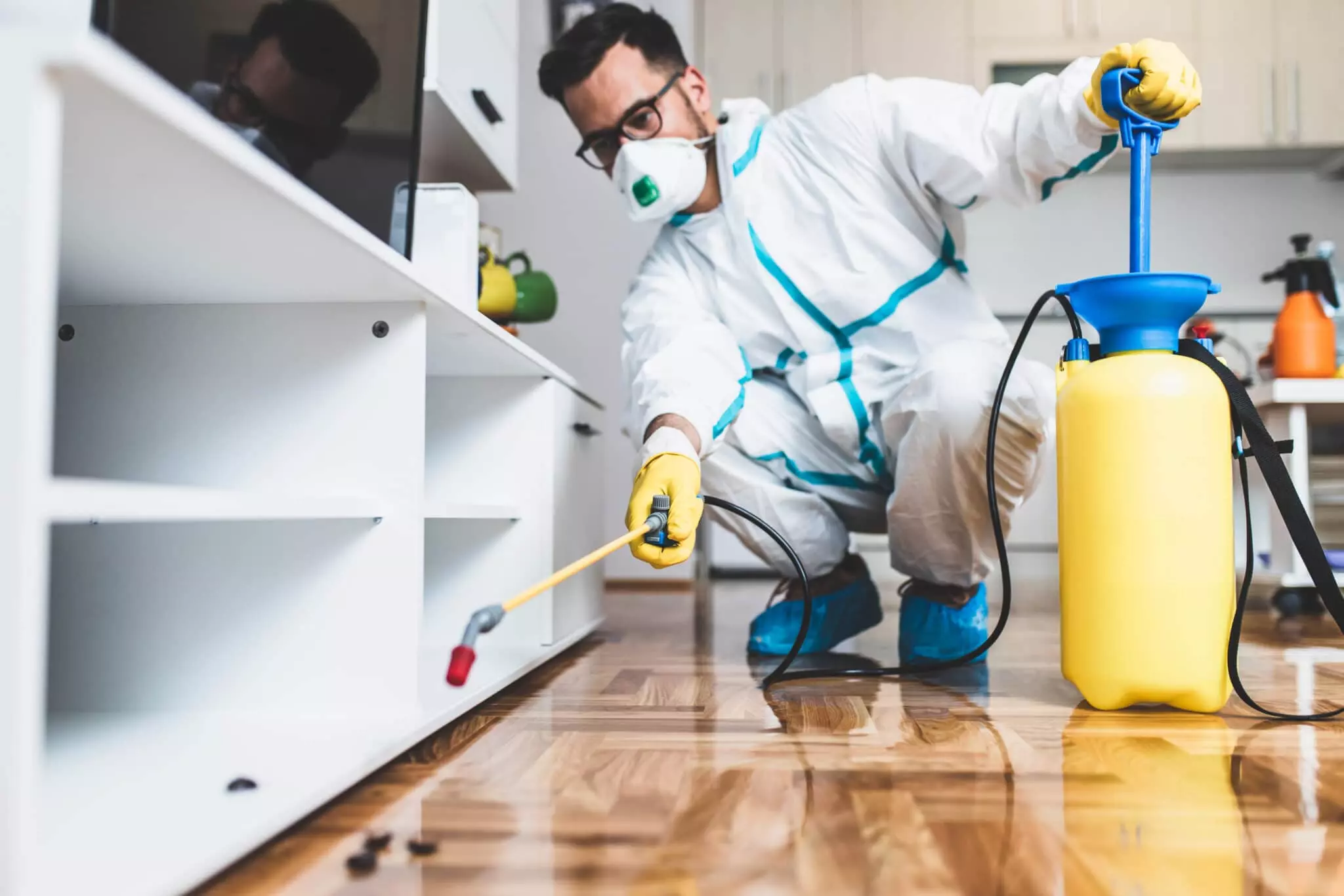Relied On A1 Exterminator Charlotte NC - Comprehensive Pest Solutions
Relied On A1 Exterminator Charlotte NC - Comprehensive Pest Solutions
Blog Article
Bed Pest Treatment Failure: Contrasting Chemical Vs. Non-Chemical Solutions
In the world of pest control, specifically when managing the persistent issue of bed pests, the selection in between chemical and non-chemical treatment options can be a crucial one. Both methods offer distinct advantages and drawbacks, affecting elements such as efficiency, security considerations, and overall expense. By taking a look at the nuanced information of each method, a more clear understanding of which course to seek in addressing a bed bug problem can be achieved.
Efficiency of Chemical Treatments
Chemical therapies for bed insect problems have been widely acknowledged for their potent and rapid efficacy in getting rid of these bugs. When considering the effectiveness of chemical treatments, it is important to comprehend that they can offer a fast and detailed service to a bed bug problem.
In addition, chemical therapies have the advantage of using residual results, indicating that they can remain to get rid of bed bugs even after the first application. This recurring activity is specifically helpful in combating any kind of potential re-infestations. Furthermore, the fast activity of chemical treatments can bring alleviation to people facing serious bed bug invasions, allowing them to reclaim control of their living areas promptly.
Safety Worry About Chemical Solutions
One important aspect that requires mindful factor to consider when using chemical services for bed insect therapy is ensuring the safety of occupants and the environment. While chemical therapies can be efficient in getting rid of bed bugs, they may pose dangers otherwise taken care of properly. Among the primary safety interest in chemical services is the potential harm they can create to human wellness. Direct exposure to specific chemicals utilized in bed bug treatments can lead to breathing concerns, skin inflammation, or various other unfavorable reactions, particularly in people with pre-existing conditions or level of sensitivities. In addition, inappropriate application or dose of chemical pesticides can cause hazardous deposits lingering in the treated location, posing long-term health threats to passengers.
Moreover, the ecological effect of chemical solutions is an additional considerable factor to consider. Some pesticides utilized in bed pest therapies might be dangerous to beneficial pests, wildlife, and environments if they seep into the dirt or water supply. It is vital to make use of chemical treatments judiciously, following security guidelines, and taking into consideration less hazardous alternatives to reduce these threats and ensure the risk-free and efficient administration of bed pest problems.
Advantages of Non-Chemical Methods
Taking into consideration the potential security problems and ecological impact connected with chemical services for bed pest therapy, checking out non-chemical methods offers an appealing alternative with numerous unique benefits. Non-chemical therapies are ecologically friendly, as they do not contribute to air or water air pollution, making them a lasting option for bug control.
Furthermore, non-chemical solutions can be reliable in targeting bed bugs, including hard-to-reach locations where chemical treatments may not pass through - A1 charlotte pest control companies. Methods such as warm treatment, vacuuming, steam cleansing, and mattress coverings provide comprehensive elimination without the usage of hazardous chemicals.
Limitations of Non-Chemical Treatments

Additionally, non-chemical therapies commonly need numerous applications to achieve successful obliteration. This can be time-consuming and may not constantly guarantee full removal of all bed bugs and their eggs, especially in hard-to-reach or surprise areas.
Additionally, the success of non-chemical therapies heavily depends on proper application and thoroughness, which can be testing for individuals without professional competence. Poor application of non-chemical methods might result in insufficient obliteration, resulting in persistent problems and the requirement for added therapies.
For that reason, while non-chemical therapies have their benefits, it is important to acknowledge these constraints and consider them when establishing the most effective technique for handling bed insect problems.
Price Contrast: Chemical Vs. Non-Chemical Options
Offered the constraints related to non-chemical treatments, an essential link aspect to review in the context of bed pest monitoring is the price contrast between chemical and non-chemical options. Chemical therapies typically involve the application of pesticides by specialists, which can vary from $250 to $900 per space, depending upon the seriousness of the infestation and the dimension of the area to be dealt with. On the other hand, non-chemical treatments like heat therapy or vapor can be a lot more costly, with costs varying from $1,000 to $6,000 for an entire home. While the first expense of chemical treatments might appear lower, numerous therapies may be needed to fully eradicate the problem, potentially increasing the total expense. On the other hand, non-chemical alternatives may provide an extra lasting and green remedy, although they can be cost-prohibitive for some people. Inevitably, when taking into consideration the price of bed pest treatment options, it is necessary to consider the ahead of time expenses versus the effectiveness and long-term sustainability of the picked approach.
Final Thought

Taking into consideration the potential security problems and environmental influence linked with chemical services for bed pest therapy, exploring non-chemical techniques presents an appealing choice with several unique benefits.Provided the constraints associated with non-chemical therapies, an important facet to evaluate in the context of bed insect management is the price contrast in between chemical and non-chemical options. In contrast, non-chemical treatments like warm therapy or steam can be extra costly, with expenses ranging from $1,000 to $6,000 for a whole home. While the first expense of chemical therapies may appear lower, numerous therapies might be needed to fully eradicate the invasion, possibly increasing the total cost.In verdict, when comparing chemical and non-chemical bed insect therapy options, it is essential to take into consideration effectiveness, security, check out here advantages, limitations, and expense.
Report this page